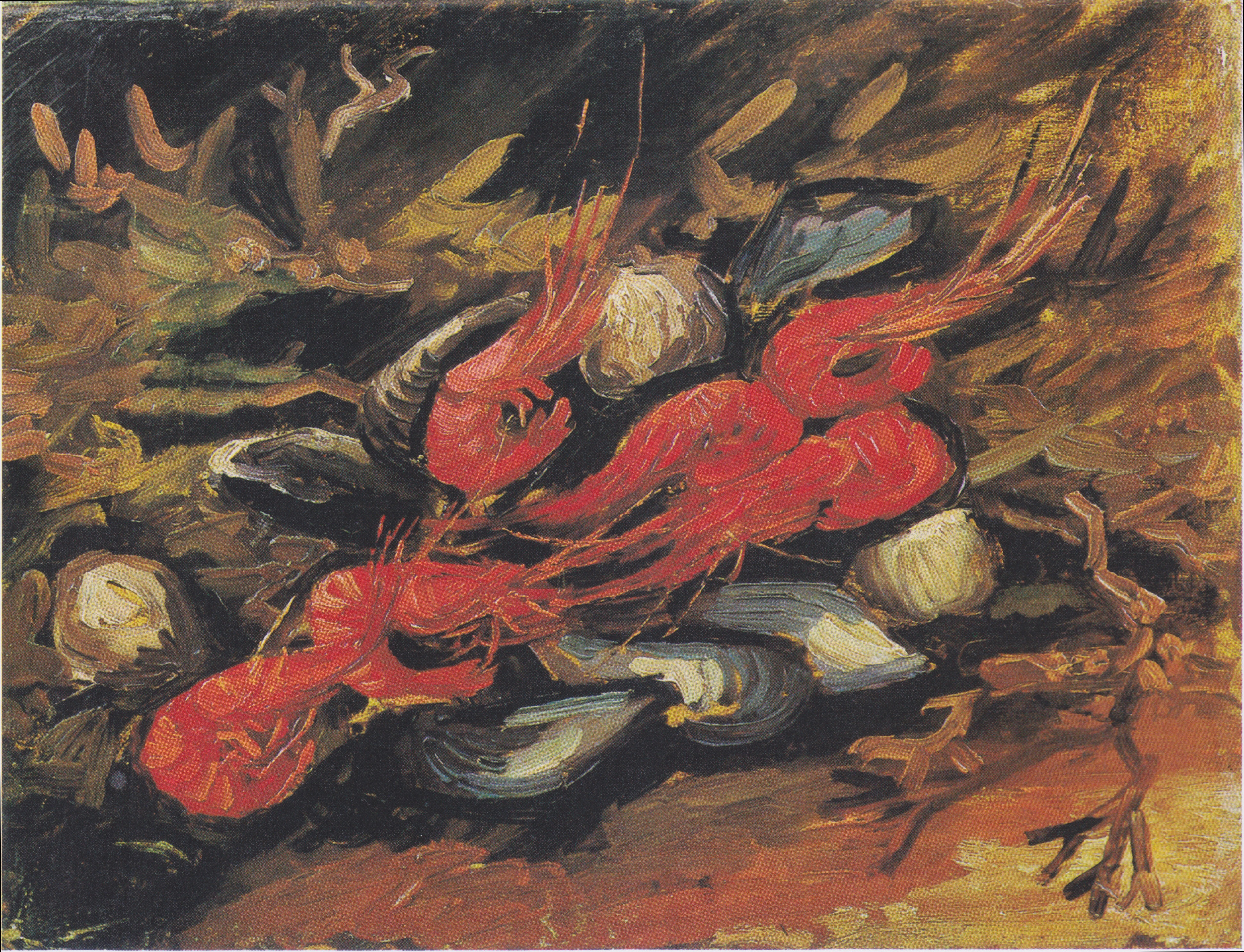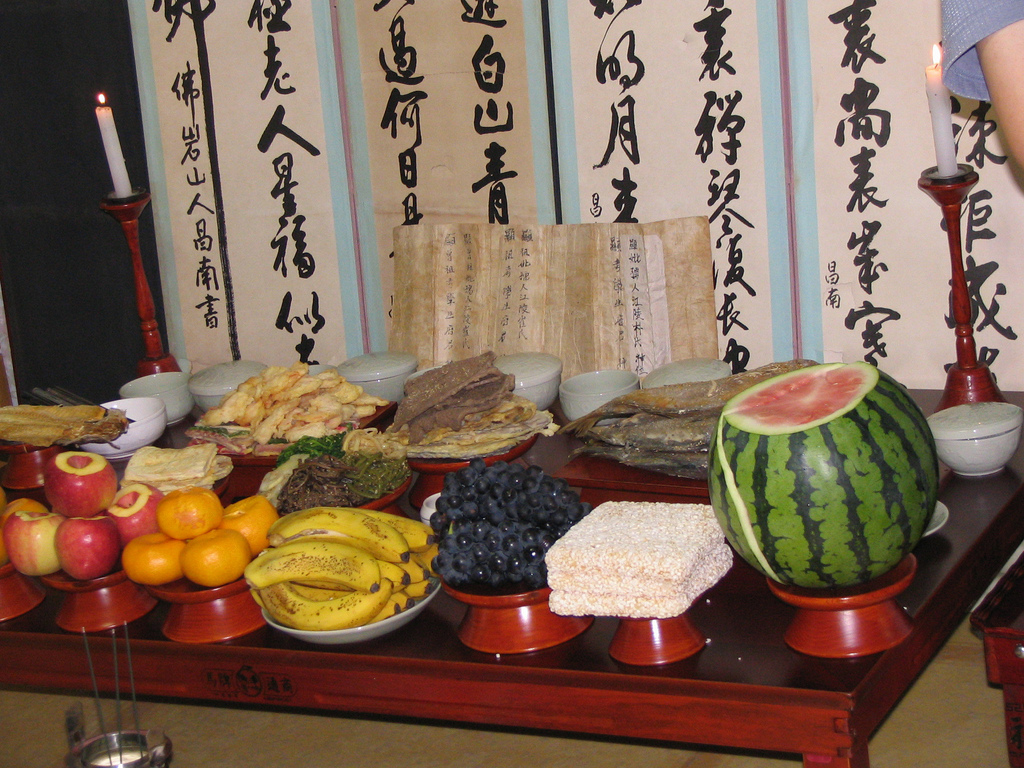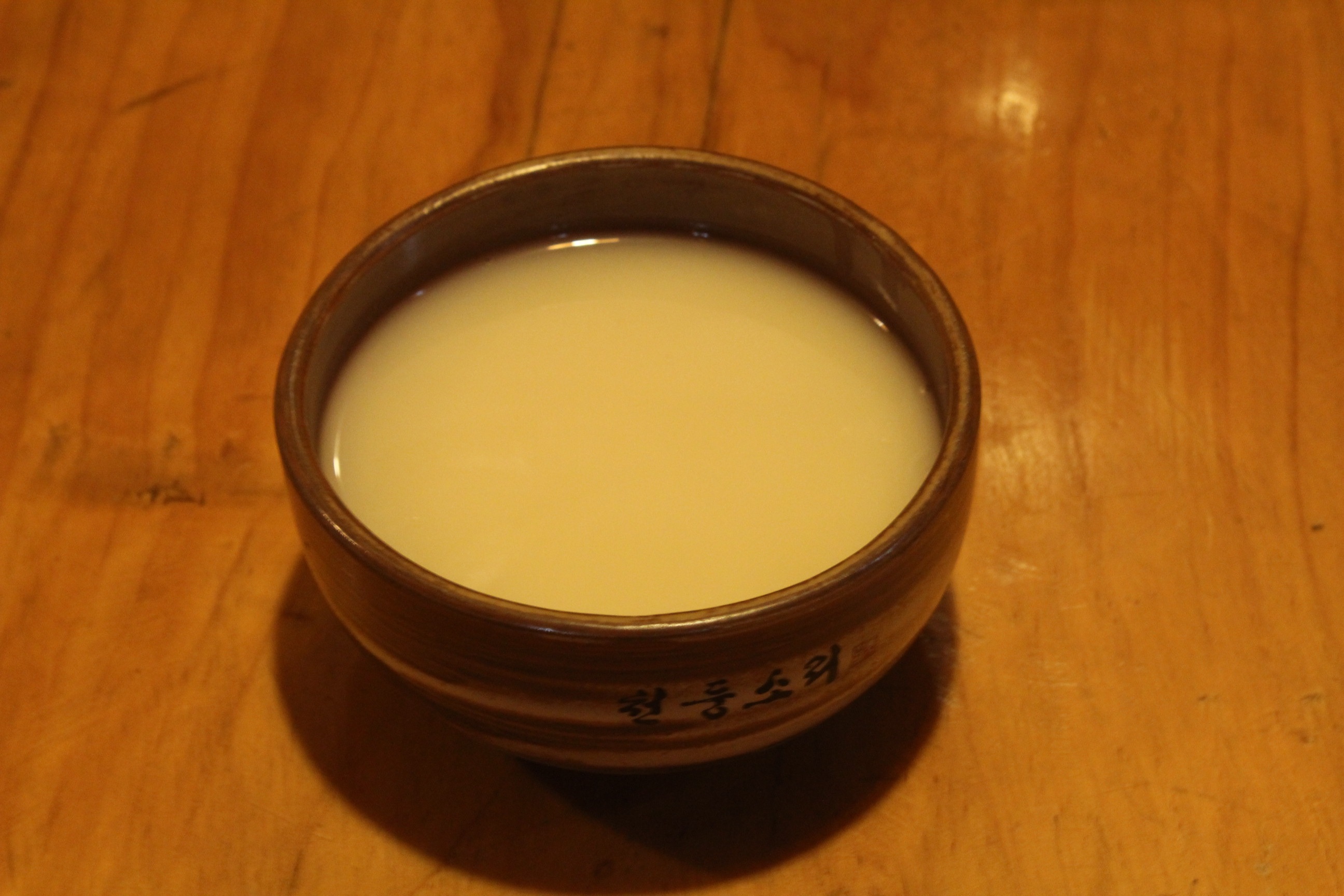|
Po (food)
( ko, 포) is thin strips or sheets of dried meat and fish used in Korean cuisine. ''Po'', which is made from meats including beef, pork, venison and poultry; and seafoods including whitefish, eel, squid, octopus, shrimp and crab; is eaten as snack food, ''banchan'' (food accompanying ''bap'') or '' anju'' (food accompanying '' sul''). ''Po'' is prepared for traditional occasions such as ''pyebaek'' (formal greetings from the newlyweds after the wedding ceremony) and ''jesa'' (ancestral rite). Name The Sino-Korean word () can be written with the hanja , which in other East Asian languages and cuisines can also mean preserved fruit. History History of ''po'' is thought to date back to pre-historic hunter-gatherer societies. According to ''Samguk sagi'' (History of the Three Kingdoms), an 1145 book written by Gim Bu-sik, in February 683 the King Sinmun of Silla sent 135 carts of rice, wine, oil, honey, ''jang'' (soy sauce, soybean paste), vinegar, and ''po'' to Gim Heum-un ... [...More Info...] [...Related Items...] OR: [Wikipedia] [Google] [Baidu] |
Hanu
The Hanwoo ( ko, 한우), also Hanu or Korean Native, is a breed of small cattle native to Korea. It was formerly used as a draught animal, but this use has almost disappeared. It is now raised mainly for meat. It is one of four indigenous Korean breeds, the others being the Chikso, the Heugu and the Jeju Black. History The Hanwoo was traditionally a working animal breed. Until the expansion of the South Korean economy in the 1960s, it was little used for beef production. A herd book was established in 1968. Hanwoo beef has since become a premium product. The Hanwoo was listed by the FAO as "not at risk" in 2007. In 2003, the total population was reported to be about ; in 2014, it was reported as . In 2001, the Hanwoo was suggested to be a hybrid between taurine and indicine cattle. A mitochondrial DNA study in 2010 found it to be closely related to two taurine breeds, the Holstein and the Japanese Black, and distinctly different from the indicine Nellore and . In 2014, ... [...More Info...] [...Related Items...] OR: [Wikipedia] [Google] [Baidu] |
Shrimp And Prawn As Food
Shrimp and prawn are types of seafood that are consumed worldwide. Although shrimp and prawns belong to different suborders of Decapoda, they are very similar in appearance and the terms are often used interchangeably in commercial farming and wild fisheries. A distinction is drawn in recent aquaculture literature, which increasingly uses the term "prawn" only for the freshwater forms of palaemonids and "shrimp" for the marine penaeids. In the United Kingdom, the word "prawn" is more common on menus than "shrimp"; the opposite is the case in North America. The term "prawn" is also loosely used for any large shrimp, especially those that come 15 (or fewer) to the pound (such as "king prawns", yet sometimes known as "jumbo shrimp"). Australia and some other Commonwealth nations follow this British usage to an even greater extent, using the word "prawn" almost exclusively. When Australian comedian Paul Hogan used the phrase, " I'll slip an extra shrimp on the barbie for you" in an A ... [...More Info...] [...Related Items...] OR: [Wikipedia] [Google] [Baidu] |
Samguk Sagi
''Samguk Sagi'' (, ''History of the Three Kingdoms'') is a historical record of the Three Kingdoms of Korea: Goguryeo, Baekje and Silla. The ''Samguk Sagi'' is written in Classical Chinese, the written language of the literati of ancient Korea, and its compilation was ordered by King Injong of Goryeo (r. 1122-1146) and undertaken by the government official and historian Kim Busik () and a team of junior scholars. Completed in 1145, it is well known in Korea as the oldest surviving chronicle of Korean history. The document has been digitized by the National Institute of Korean History and is available online with Modern Korean translation in Hangul and original text in Classical Chinese. Background In taking on the task of compiling the ''Samguk Sagi'' ("compiling" is more accurate than "writing" because much of the history is taken from earlier historical records), Kim Busik was consciously modeling his actions on Chinese Imperial traditions, just as he modeled the history’s f ... [...More Info...] [...Related Items...] OR: [Wikipedia] [Google] [Baidu] |
Hunter-gatherer
A traditional hunter-gatherer or forager is a human living an ancestrally derived lifestyle in which most or all food is obtained by foraging, that is, by gathering food from local sources, especially edible wild plants but also insects, fungi, honey, or anything safe to eat, and/or by hunting game (pursuing and/or trapping and killing wild animals, including catching fish), roughly as most animal omnivores do. Hunter-gatherer societies stand in contrast to the more sedentary agricultural societies, which rely mainly on cultivating crops and raising domesticated animals for food production, although the boundaries between the two ways of living are not completely distinct. Hunting and gathering was humanity's original and most enduring successful competitive adaptation in the natural world, occupying at least 90 percent of human history. Following the invention of agriculture, hunter-gatherers who did not change were displaced or conquered by farming or pastoralist groups in ... [...More Info...] [...Related Items...] OR: [Wikipedia] [Google] [Baidu] |
Routledge
Routledge () is a British multinational publisher. It was founded in 1836 by George Routledge, and specialises in providing academic books, journals and online resources in the fields of the humanities, behavioural science, education, law, and social science. The company publishes approximately 1,800 journals and 5,000 new books each year and their backlist encompasses over 70,000 titles. Routledge is claimed to be the largest global academic publisher within humanities and social sciences. In 1998, Routledge became a subdivision and imprint of its former rival, Taylor & Francis Group (T&F), as a result of a £90-million acquisition deal from Cinven, a venture capital group which had purchased it two years previously for £25 million. Following the merger of Informa and T&F in 2004, Routledge became a publishing unit and major imprint within the Informa "academic publishing" division. Routledge is headquartered in the main T&F office in Milton Park, Abingdon, Oxfordshire and ... [...More Info...] [...Related Items...] OR: [Wikipedia] [Google] [Baidu] |
Hanja
Hanja (Hangul: ; Hanja: , ), alternatively known as Hancha, are Chinese characters () used in the writing of Korean. Hanja was used as early as the Gojoseon period, the first ever Korean kingdom. (, ) refers to Sino-Korean vocabulary, which can be written with Hanja, and (, ) refers to Classical Chinese writing, although "Hanja" is also sometimes used to encompass both concepts. Because Hanja never underwent any major reforms, they are mostly resemble to ''kyūjitai'' and traditional Chinese characters, although the stroke orders for some characters are slightly different. For example, the characters and as well as and . Only a small number of Hanja characters were modified or are unique to Korean, with the rest being identical to the traditional Chinese characters. By contrast, many of the Chinese characters currently in use in mainland China, Malaysia and Singapore have been simplified, and contain fewer strokes than the corresponding Hanja characters. In Japan, s ... [...More Info...] [...Related Items...] OR: [Wikipedia] [Google] [Baidu] |
Sino-Korean Vocabulary
Sino-Korean vocabulary or Hanja-eo () refers to Korean words of Chinese origin. Sino-Korean vocabulary includes words borrowed directly from Chinese, as well as new Korean words created from Chinese characters, and words borrowed from Sino-Japanese vocabulary. Many of these terms were borrowed during the height of Chinese-language literature on Korean culture. Anywhere from 30-60 percent of Korean words are of Chinese character origin. Many of these words have also been truncated or altered for the Korean language. History The use of Chinese and Chinese characters in Korea dates back to at least 194 BCE. While Sino-Korean words were widely used during the Three Kingdoms period, they became even more popular during the Silla period. During this time, male aristocrats changed their given names to Sino-Korean names. Additionally, the government changed all official titles and place names in the country to Sino-Korean. Sino-Korean words remained popular during the Goryeo and Jos ... [...More Info...] [...Related Items...] OR: [Wikipedia] [Google] [Baidu] |
Jesa
Jesa (, ) is a ceremony commonly practiced in the East Asian cultural sphere. Jesa functions as a memorial to the ancestors of the participants. Jesa are usually held on the anniversary of the ancestor's death. The majority of Catholics, Buddhists and nonbelievers practice ancestral rites, although Protestants do not. The Catholic ban on ancestral rituals was lifted in 1939, when Pope Pius XII formally recognized ancestral rites as a civil practice (see Chinese Rites controversy). Many Korean Christians, particularly Protestants, no longer practice this rite. Christians generally, and Muslims avoid the rites, and many emigrants avoid the rites Since their origins, Jesa has taken on a certain formality as human civilization has developed, which is sometimes called rituals in Confucianism . Origins in Ancient China Jesa, 祭祀 (corresponding to English: sacrifice (祭), ritual (祀); ) evolved from the ancient Chinese ''sacrifice'' ritual, which refers to the use of strin ... [...More Info...] [...Related Items...] OR: [Wikipedia] [Google] [Baidu] |
Pyebaek
Pyebaek is a Korean wedding custom that is traditionally held a few days after the official ceremony, with only family members present. The ceremony begins with the older couple seated on cushions behind a table in front of a painted screen, with the newlyweds opposite them. The newlyweds perform a deep bow which begins standing and ends with the newlyweds pressing their foreheads to their hands while kneeling on the floor. The bride may present the groom's parents with jujubes (Chinese dates) and chestnuts, which symbolize children. A variation will have the newlyweds offering cups of wine, usually cheongju. The bride offers the cup to the father, and the groom offers the cup to the mother. Sometimes the parents will then also offer the newlyweds cups of cheongju or ''soju''. The older couple then shares some wisdom on marriage from their advanced experience. Finally they will throw the jujubes and chestnuts back at the bride, who has to try catching them with her wedding skirt. ... [...More Info...] [...Related Items...] OR: [Wikipedia] [Google] [Baidu] |
Reaktion Books
Reaktion Books is an independent book publisher based in Islington, London, England. It was founded in 1985 in Edinburgh, Scotland, and moved to London in 1987. Reaktion originally focused on the fields of art, architecture, and design. In recent years it has broadened to include more areas and also publishes series of books. Details Reaktion originally focused on the fields of art, architecture, and design – its first book was ''Ian Hamilton Finlay: A Visual Primer'' by Yves Abrioux. In recent years Reaktion's list has broadened substantially, and now also encompasses animal studies, Asian art and culture, biography, cultural studies, current events, fashion, film, food history, geography, general history, music, philosophy, photography, politics, and sports history. Reaktion now produces around 70 new titles each year and has about 500 titles in print. Among the monographs released by Reaktion are studies of the Ottoman architect Sinan and the artists Delaroche, Holbein, Ti ... [...More Info...] [...Related Items...] OR: [Wikipedia] [Google] [Baidu] |
Korean Alcoholic Drinks
Korean cuisine has a wide variety of traditional alcoholic drinks, known as ''sul'' (). Many of these drinks end with the Sino-Korean word ''-ju'' (), and some end with the native Korean word ''-sul''. The Sino-Korean ''-ju'' is not used as an independent noun. There are an estimated 1,000 or more kinds of alcoholic drinks in Korea. Most are made from rice, and are fermented with the aid of yeast and ''nuruk'' (a wheat-based source of the enzyme amylase). Fruits, flowers, herbs, and other natural ingredients have also been used to craft traditional Korean alcoholic drinks. There are six distinct flavors: sweet, sour, pungent, roasted, bitter, and spicy. When the flavors are balanced, the alcohol is considered of good quality. Etymology There are several hypotheses regarding the origin of the word Sul, for one it is thought to have come from Chinese characters or Su-eul meaning Korean milk porridge (Korean word Tarakjuk). It can be understood that Sul must have derived from the ... [...More Info...] [...Related Items...] OR: [Wikipedia] [Google] [Baidu] |
Anju (food)
''Anju'' ( ) is a Korean term for food consumed with alcohol. It consists of a variety of foods, including both main dishes and side dishes. Consuming food with alcohol is a widespread practice in Korea, especially when the alcoholic beverage soju is involved. Certain types of foods consumed primarily as anju include golbaengi muchim, nogari with peanuts, and jokbal. History Until the Chosun Dynasty, alcohol was mainly served in (a type of inn or tavern), where soups with rice, along with traditional alcohol such as , were served to guests. Since the introduction of beer and Western foods into Korea, mainly from Japan in the nineteenth century, bars and pubs have enjoyed a newfound popularity, and many types of Western foods have been consumed as anju. By types of beverage Some foods are considered to be best complemented by certain types of alcohol. For example, samgyeopsal, grilled pork belly, is considered to go best with soju, while fried chicken or Korean seasone ... [...More Info...] [...Related Items...] OR: [Wikipedia] [Google] [Baidu] |







